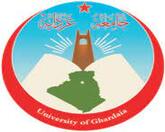Please use this identifier to cite or link to this item:
https://dspace.univ-ghardaia.edu.dz/xmlui/handle/123456789/10145Full metadata record
| DC Field | Value | Language |
|---|---|---|
| dc.contributor.author | بن دكن, رحيلة | - |
| dc.date.accessioned | 2025-11-05T08:09:10Z | - |
| dc.date.available | 2025-11-05T08:09:10Z | - |
| dc.date.issued | 2022 | - |
| dc.identifier.uri | https://dspace.univ-ghardaia.edu.dz/xmlui/handle/123456789/10145 | - |
| dc.description.abstract | هدفت هذه الدراسة إلى التعرف على أكثر معوقات تنمية مهارات التفكير الإبداعي شيوعا لدى تلاميذ مرحلة التعليم المتوسط من وجهة نظر أستاذ ومستشار التوجيه وكذا مستوى هذه المعوقات، بالإضافة إلى إبراز الفروق في معوقات تنمية مهارات التفكير الإبداعي لدى تلاميذ مرحلة التعليم المتوسط من وجهة نظر عينة الدراسة باختلاف متغير الوظيفة والخبرة المهنية، وقد اعتمدنا على المنهج الوصفي الإستكشافي، حيث تم اختيار عينة عشوائية والتي تكونت من 100 أستاذ ومستشار التوجيه، منهم 88 أستاذ و12 مستشار التوجيه، ولتحقيق أهداف الدراسة تم إعداد مقياس من قبل الطالبة بعد الإطلاع على مقياسسيسي احاندو (2017) مكون من 40 عبارة، والجانب النظري لمتغير الدراسة. أظهرت النتائج على أنه: - يوجد مستوى مرتفع من معوقات تنمية مهارات التفكير الإبداعي لدى تلاميذ مرحلة التعليم المتوسط من وجهة نظر أستاذ ومستشار التوجيه. - أكثر معوقات شيوعا من وجهة نظر عينة الدراسة في تنمية مهارات التفكير الإبداعي تمثلت في معوقات المتعلقة بالتلميذ. - لا توجد فروق دالة إحصائيا بين وجهة نظر كل من الأستاذ ومستشار التوجيه في معوقات تنمية مهارات التفكير الإبداعي لدى تلاميذ مرحلة التعليم المتوسط. - لا توجد فروق دالة إحصائيا في معوقات تنمية مهارات التفكير الإبداعي لدى تلاميذ مرحلة التعليم المتوسط من وجهة نظر عينة الدراسة تعزى متغير الخبرة المهنية. This study aimed to identify the most common obstacles to the development of creative thinking skills among middle school students from the perspective of teachers and educational guidance counselors, as well as to determine the level of these obstacles. Additionally, the study sought to examine the differences in the perceived obstacles to developing creative thinking skills based on the variables of job position and professional experience,The descriptive-exploratory method was adopted, and a random sample was selected, consisting of 100 participants, including 88 teachers and 12 educational guidance counselors. To achieve the study objectives, a scale was developed by the researcher based on the theoretical framework of the study variable and after reviewing the scale developed by Sissi Ahando (2017), which comprised 40 items. The results indicated that: - There is a high level of obstacles hindering the development of creative thinking skills among middle school students from the perspective of teachers and educational guidance counselors. - The most common obstacles, as perceived by the study sample, were those related to the students themselves. - There were no statistically significant differences between teachers and guidance counselors regarding their perceptions of the obstacles to developing creative thinking skills among middle school students. - There were no statistically significant differences in the perceived obstacles based on the variable of professional experience. | EN_en |
| dc.publisher | جامعة غرداية | EN_en |
| dc.subject | التفكير الإبداعي | EN_en |
| dc.subject | معوقات | EN_en |
| dc.subject | creativethinking | EN_en |
| dc.subject | obstacles | EN_en |
| dc.title | معوقات تنمية مهارات التفكير الإبداعي لدى طلبة مرحلة التعليم المتوسط من وجهة نظر الأستاذ ومستشار التوجيه دراسة ميدانية في عينة من المدارس المتوسطة على مستوى ولاية غرداية - | EN_en |
| dc.type | Thesis | EN_en |
| Appears in Collections: | Mémoires de Master | |
Files in This Item:
| File | Description | Size | Format | |
|---|---|---|---|---|
| 108.04.550.pdf | 1.93 MB | Adobe PDF | View/Open |
Items in DSpace are protected by copyright, with all rights reserved, unless otherwise indicated.
